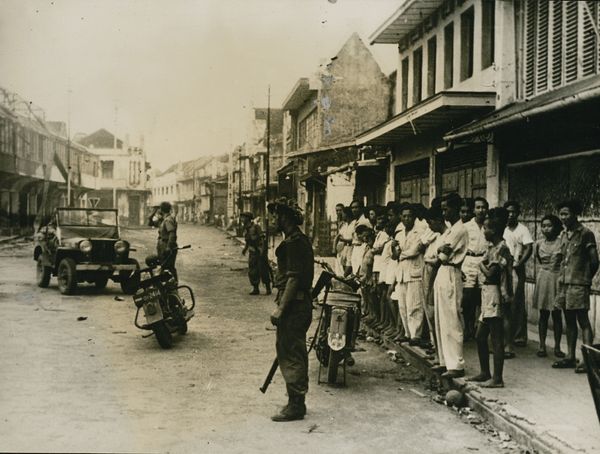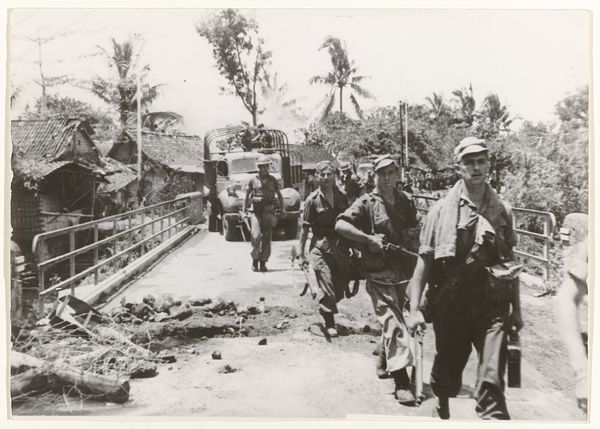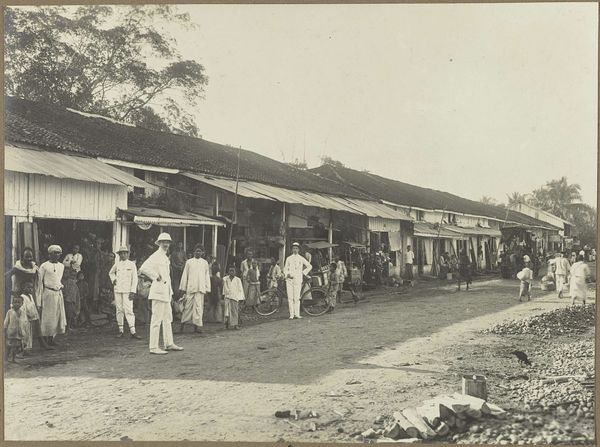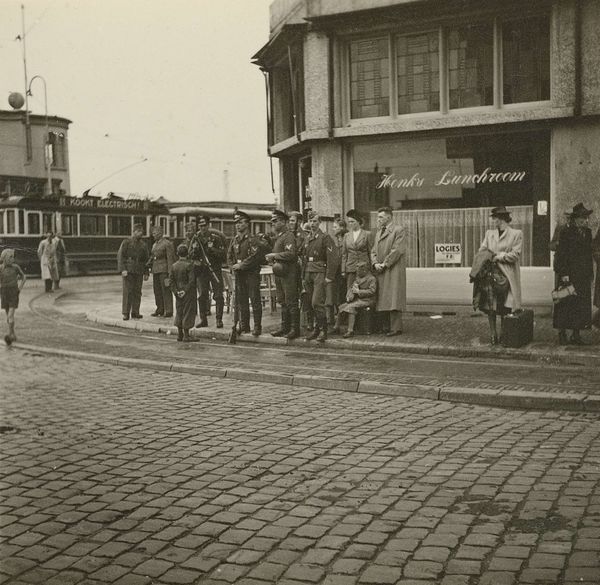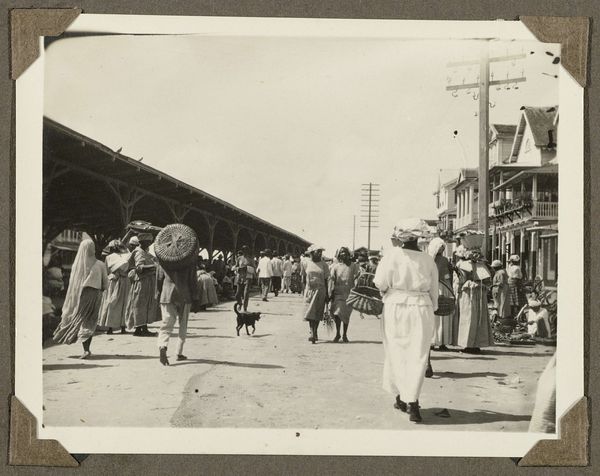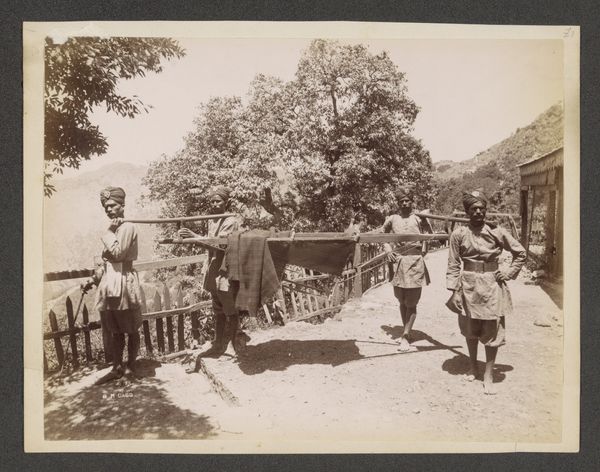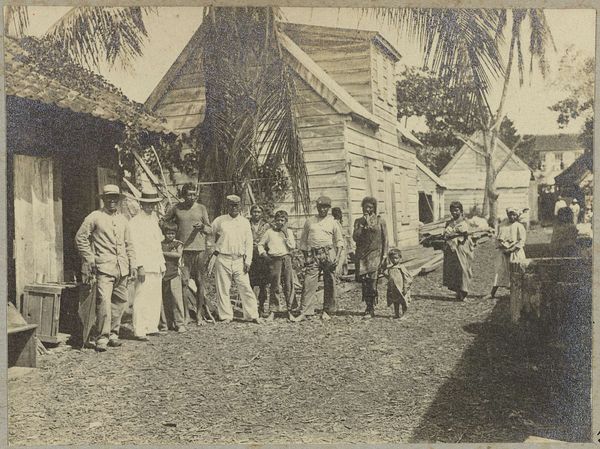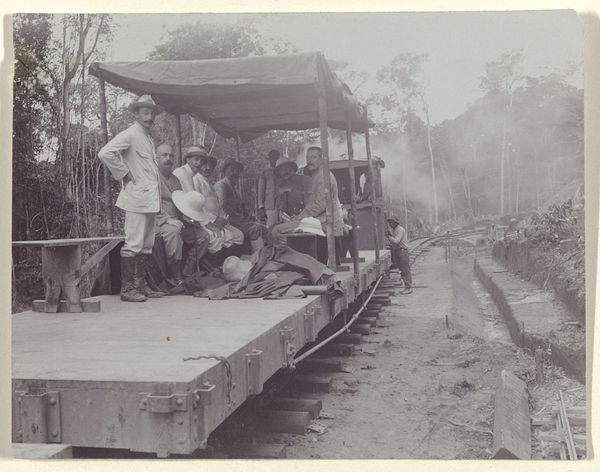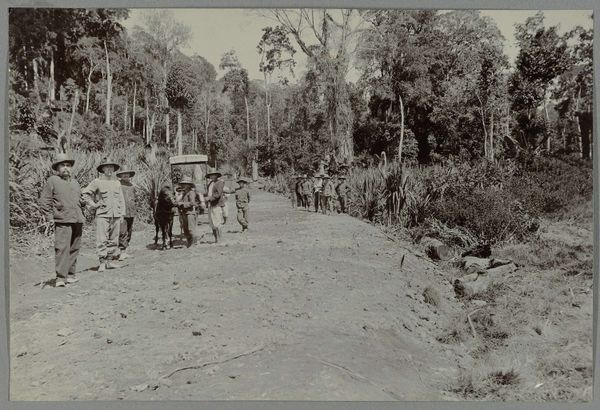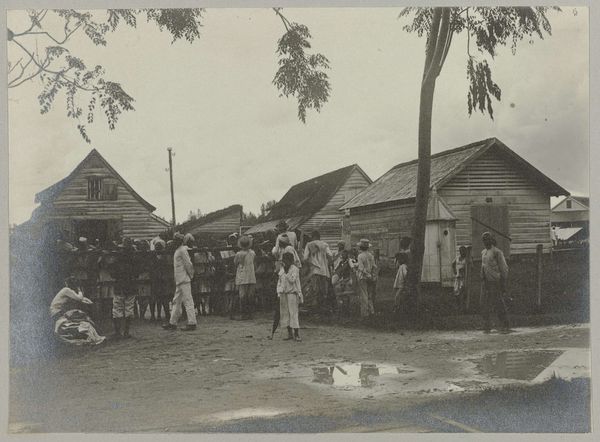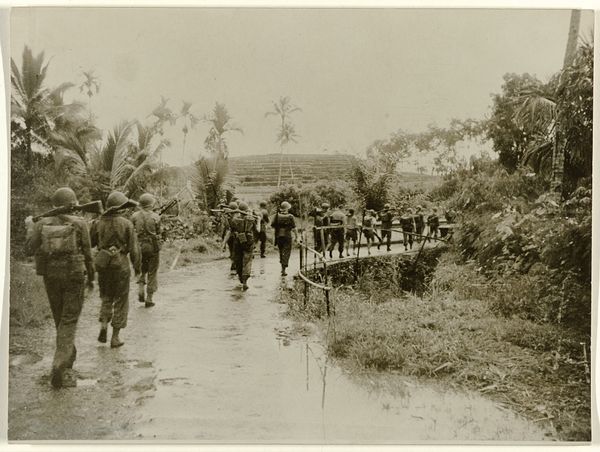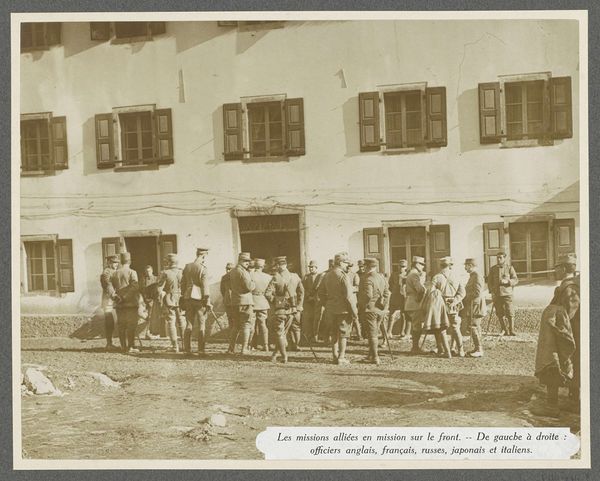
Gekaapte trein loopt het station van Tandjungrasa binnen Possibly 1949
0:00
0:00
photography, gelatin-silver-print
#
print photography
#
narrative-art
#
asian-art
#
archive photography
#
street-photography
#
photography
#
historical photography
#
gelatin-silver-print
#
monochrome photography
#
realism
#
monochrome
Dimensions: width 20 cm, height 13 cm
Copyright: Rijks Museum: Open Domain
Curator: Immediately, I’m struck by the urgency and the somewhat chaotic feeling of this image. Editor: Yes, it is indeed a dynamic and complex composition. This gelatin silver print, whose title translates to "Hijacked Train Enters the Tandjungrasa Station", is attributed to Associated Press, likely dating from around 1949. It is now part of the Rijksmuseum's collection. Curator: 1949. Looking at it, the immediate connection for me is to broader historical discussions of colonialism and post-colonial struggle. I am instantly drawn to the young men rushing forward—who were they? Editor: Note the balance—the visual weight of the building anchors the right side, countered by the receding perspective of the train and figures leading to the left. It cleverly guides our eye through the scene. Curator: Exactly. And I see them flooding from a train, their purpose becomes central to understanding this piece. Knowing this photograph probably depicts a critical moment during the Indonesian National Revolution is essential. The body language conveys so much, doesn’t it? How power dynamics are visually performed through acts like commandeering transportation. Editor: Yes, the subjects of the print offer a tonal gradient moving towards the foreground—this gives depth and helps create the sense of movement we initially observed. Light and shadow play is central here. The contrast emphasizes both tension and expectation within the moment. Curator: It reminds us that photography doesn’t merely record but also participates in constructing narratives of conflict and resistance. Whose stories get told and how is so much a question of access. We have a news service at work here in selecting this frozen moment in a far broader liberation effort. Editor: Agreed. Thinking through the photograph as a historical document gives it layers upon layers of interpretative possibilities that radiate well beyond that one burst moment it captured, as the greyscale tonality emphasizes and abstracts simultaneously. The photo asks us to contemplate movement and action in terms of history and narrative. Curator: I agree, that even through static media, there's kinetic impact from the image. Editor: Indeed, it allows me to think of art as language—here, syntax for revolution.
Comments
No comments
Be the first to comment and join the conversation on the ultimate creative platform.
